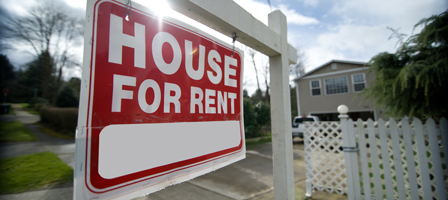SELLING YOUR HOME
Article Highlights
- Individuals can exclude up to $250,000 ($500,000 for a married couple filing jointly) of gain from the sale of their primary residence.
- Generally, to qualify for the exclusion, the home must have been owned and used as a primary residence for two of the prior five years.
- Reduced exclusions apply in certain circumstances where the home was owned and used less than the required two years.
- Special rules apply to a home acquired via a tax-deferred exchange that was formerly used as a rental or when a portion of the home was used for business.
- Un-excluded gain is subject to more favorable capital gains tax rates. During the summer months, many people sell their homes and move to a new location.
Many of those individuals will make a profit on the sale and still will not have to pay a single dime of additional income tax to the IRS. If you are in this position, you may find the following information useful.
Generally, a profit is made if the selling price of a home is greater than the price that was paid to purchase the home. That profit, considered a capital gain, is usually subject to income tax. If there is loss, the loss is generally not deductible since the home is personal use property. However, under certain circumstances, the law allows you to exclude all or part of that gain from your income – that is, tax may not have to be paid on the profit.
Individuals may be able to exclude up to $250,000 of home sale capital gain, and married taxpayers filing joint returns may be able to exclude up to $500,000. The exclusion may be claimed each time the main home is sold, but generally not more than once every two years. An unmarried surviving spouse may be able exclude $500,000 if the sale occurs no later than two years after the date of the other spouse’s death.
To qualify, you must meet both the ownership and use tests.
- Ownership Test: During the five-year period ending on the date of the sale, you must have owned the home for at least two years.
- Use Test: During the five-year period ending on the date of the sale, you must have lived in the home as your main home for at least two years.
If you file a joint return with your spouse and both of you meet the use test, you normally will be able to claim the exclusion for married couples even if only one of you meets the ownership test.
If these tests are not met, a reduced amount of the home sale gain may still be excluded. But the home must have been sold for other specific reasons, such as serious health issues, a change in the place of employment, or certain unforeseen circumstances (such as a divorce or legal separation), natural or man-made disasters resulting in a casualty to the home, or an involuntary conversion of the home.
For individuals on qualified official extended duty in the U.S. Armed Services, the Foreign Service, or the intelligence community, the five-year test period may be suspended for up to ten years. Military service is considered qualified extended duty when, for more than 90 days or for an indefinite period, that individual is:
- At a duty station that is at least 50 miles from his or her main home, or
- Residing under government orders in government housing.
If you have more than one home, you can exclude a gain only from the sale of your main home. You must pay tax on the gain from selling any other home. If you have two homes and live in both of them, your main home is ordinarily the one you live in most of the time.
Additional complications may apply if the home was acquired via a tax-deferred exchange, was previously a rental, or was used partially for business.
If you have a gain after applying the allowable exclusion, that gain will be reported on Form 8949 and the gain taxed similar to gain from selling stocks and bonds. If held a year or less, it will be a short-term capital gain taxed at ordinary income tax rates. If held for more than a year, it will be taxed at the more favorable long-term capital gain rate, which varies from zero to 20% (the higher your income for the year, the higher the capital gain rate). If you have capital losses from sales of other property during the year or capital loss carryovers from prior years, they can be used to offset the home gain that exceeds the exclusion amount.
If your modified adjusted gross income for the year exceeds $200,000 ($250,000 for joint filers and $125,000 married individuals filing separately), some portion of the gain will also be subject to the new 3.8% surtax on net investment income that is imposed as part of the Affordable Care Act (the new health care reform law).
Finally, if you purchased your home in 2008, claimed the first-time homebuyer’s credit, and have a gain from selling the home, you may be required to recapture the balance of the un-repaid credit.
Issues connected to selling a home can be complicated. If you have questions related to your specific circumstances, please give this office a call.







Leave a Reply
Want to join the discussion?Feel free to contribute!